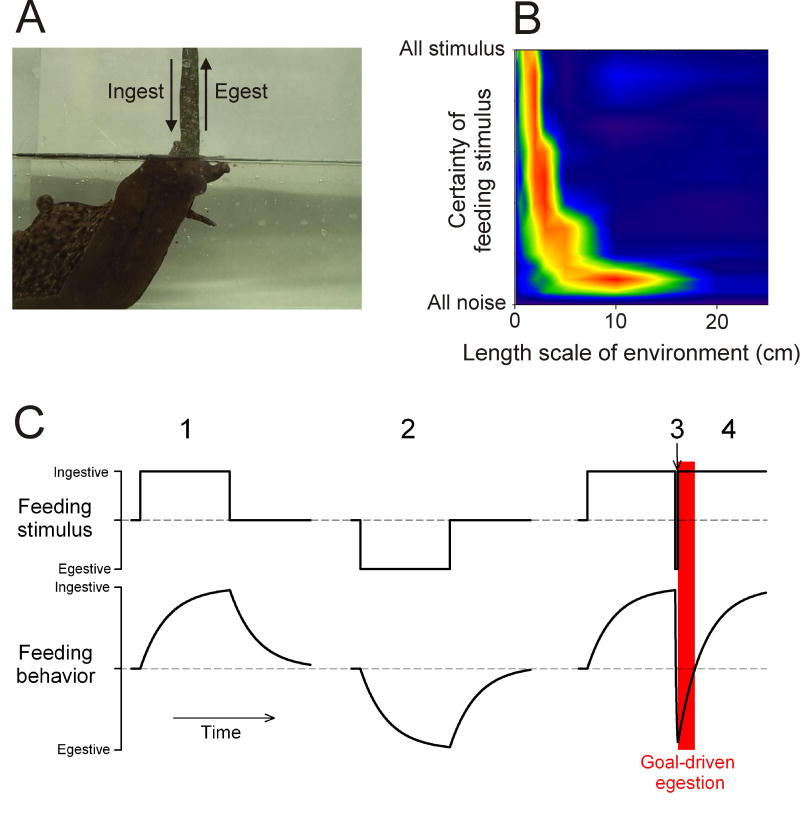Figure 3.
Feeding CPG dynamics and behavior in Aplysia. A, Aplysia in a feeding posture. The ingestive and egestive arrows indicate movement of the seaweed strip into and out of the mouth of the animal, respectively. Adapted from Lum et al (2005). B, Functional performance of a computational model of the feeding CPG dynamics shown in C in a simulated feeding task modeled on the behavior in A, plotted over a range of two basic parameters of a simulated feeding environment: the length scale of the environment (the average length of the seaweed strips present in the environment) and the certainty with which the feeding stimuli in the environment can actually be detected. Warm colors indicate good performance, cool colors poor performance. C, Cartoon of the dynamics of the feeding CPG as quantified by Proekt et al (2004). Discrete motor programs are not represented; rather, the underlying evolution of their ingestive-egestive character is indicated by a time-continuous variable, the “feeding behavior.” The red rectangle indicates a period during which, in the behavioral simulations described in the text, the model would perform goal-driven egestion, that is, egestion despite an ingestive stimulus.

